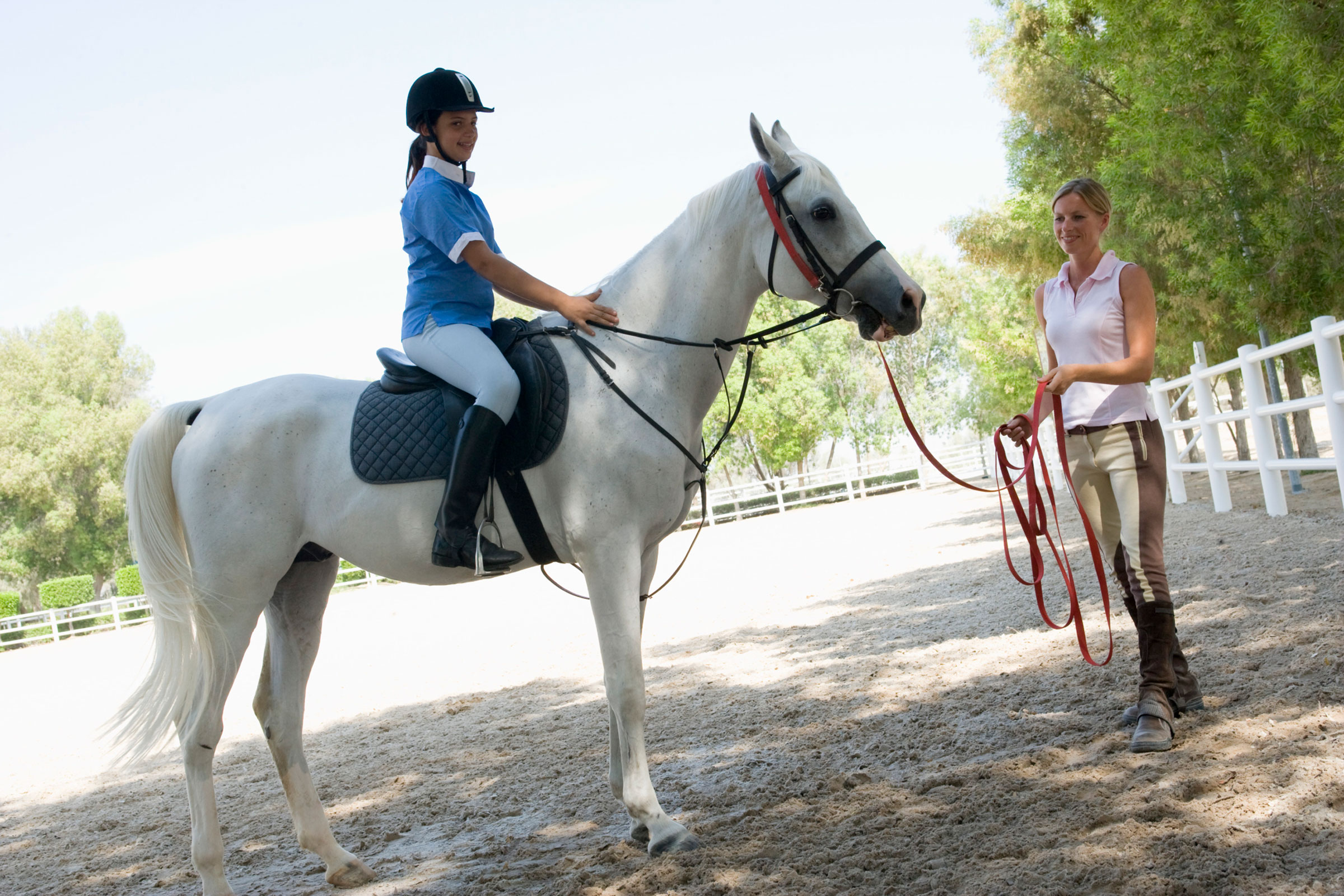
Editor’s note: For the next few weeks we will be running a series of articles on hiring riding instructors and hiring employees for your horse farm or stable. Check back under Articles>Stable Management for additional articles in these series.
Deciding what to pay riding instructors doesn’t have stressful. You have the flexibility to create a pay scale that fits your stable’s needs and also benefits the individual you plan to hire. Riding instructors are usually either paid a flat rate per lesson or offered a percentage of the lesson fee taught.
There are pros and cons to both. In either case, it’s important to account for your overhead when deciding exactly what the rate or percentage will be.
A flat hourly rate provides the instructor guaranteed earnings. Going this route means you’ll have to pay a high enough rate to attract the level of talent to fit your business.
“I pay my instructor a flat fee per hour/per rider,” said Cheryl Rohnke Kronsberg, owner of CRK Training Stable in California.
The CHA Master Instructor and AQHA Professional Horseman said she pays her instructor about 25 percent of the total lesson fee collected per rider.
“Group lessons are more difficult to teach and require a higher level of experience,” she said. “Group lesson also make the stable more money, therefore, the instructor should receive higher pay for those lessons.”
If you’re an experienced trainer and are looking for an apprentice you can mentor and teach, a lower rate is likely acceptable to the candidate you’ll hire. On the other hand, if you’re looking for an instructor with a proven track record and/or an individual with certifications, the flat rate or hourly fee will need to reflect that individual’s experience.
The other option is to pay an instructor a percentage of the total lesson fees collected for the sessions that he/she teaches. This can motivate an instructor to bring in more business to benefit himself or herself and the stable.
Michael Davis, a National Reining Horse Association (NRHA) Pro Trainer in Davenport, Iowa, explained that he uses his lessons horses as an opportunity for his assistant trainers to increase their earnings and further develop their skills.
“The assistant trainers keep 50 percent of the lesson fee,” he said.
In part, Davis offers this as an alternative to a pay raise, but it’s also a learning experience for new trainers in what the business will be like when they go out on their own. For large stables, offering an employee the opportunity to teach lessons can be considered an employee benefit offered in addition to, or in place of, paid time off, health insurance or retirement savings.
“In most cases the assistant trainers are going to go out on their own at some point,” he said. “Lessons are a great way to generate income, and in the real world it might be what they have to do.”
Before a new instructor joins the stable or an employee is offered the opportunity to teach, talk with your accountant and/or attorney to make sure that whichever option you chose is fair to both parties and meets any legal requirements. Also talk to your farm’s insurance provider to see what additional coverage you might need



